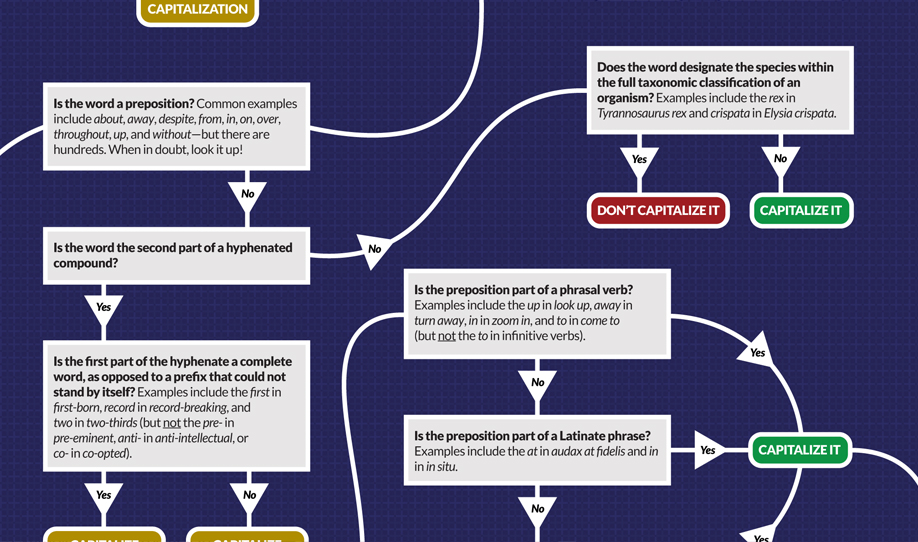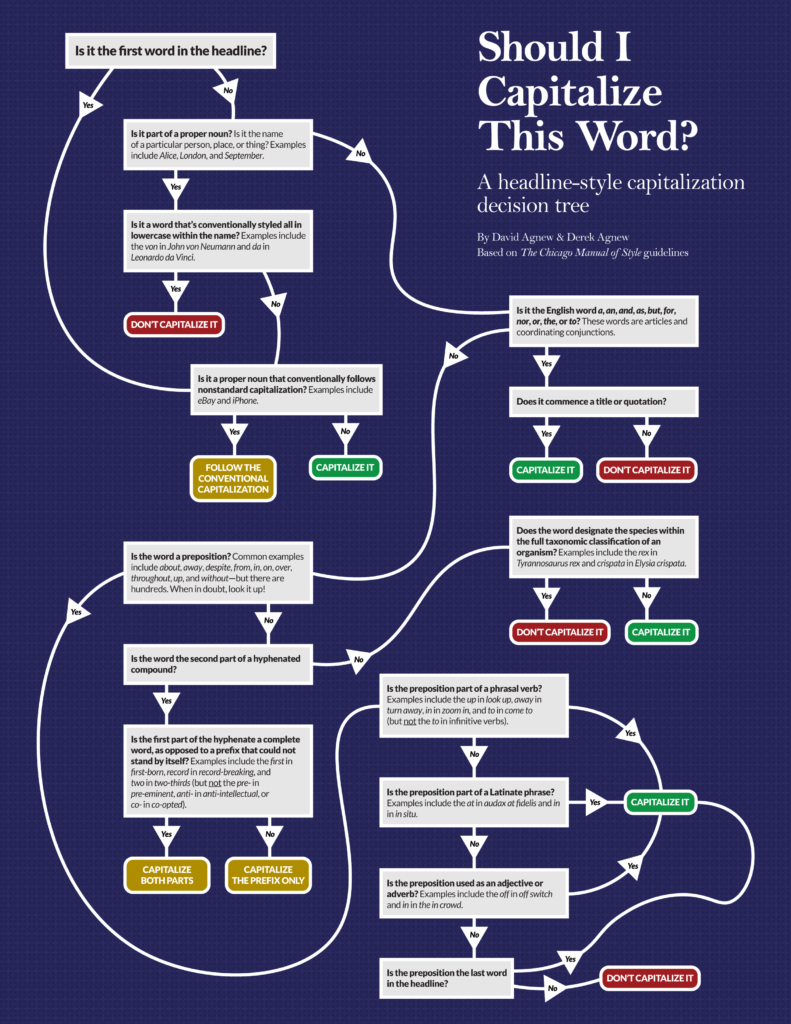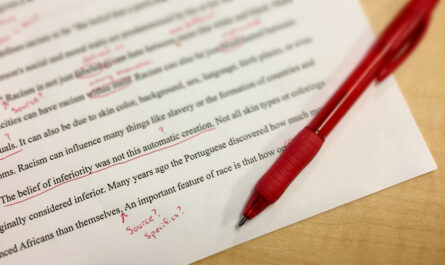In a hurry? Skip to the image below!
Headline-style capitalization (also called “title case”) is the use of capitals for the “important words” in article headlines and publication titles—like Fire Destroys Warehouse, Senate Passes Anti-corruption Bill, or Cher to Star in Moonstruck Sequel. It sounds so straightforward! In reality, the rules that govern headline-style capitalization are rather tricky.
It’s not uncommon to see people lowercase words like “it” or “is” in a headline (probably under the assumption that these words are not important simply because they’re short—even though they may be the sentence’s primary subject or verb), but capitalize longer prepositions like “forward” or “without.”
Of course, not all publications use headline-style capitalization. Many newspapers, for instance, run their headlines in sentence case. The majority of magazines published in North American use headline-style caps, though, following The Chicago Manual of Style’s guidelines.
But the most recent edition of Chicago has no less than 35 separate index entries under “headline-style capitalization”! Most of these govern titles rather than headlines, but even the sections devoted specifically to headlines run to two pages of guidelines, exceptions to the guidelines, and exceptions to the exceptions.
There are a few rules of thumb beyond the vague notions of “important” and “unimportant,” such as “lowercase coordinating conjunctions,” but even these run into problems. Knowing the list of coordinating conjunctions (for, and, nor, but, or, yet, and so—the “FANBOYS”) is some help, but “so” can also function as a modifier, an interjection, or a subordinating conjunction (all of which should be capitalized), so even these rules aren’t perfect.
There has to be a simpler way! With that in mind, I’ve put together this handy decision tree with the help of designer Derek Agnew. A downloadable pdf version is available here—or click the image below to open the full-size image in a new tab.
Happy capitalizing!




